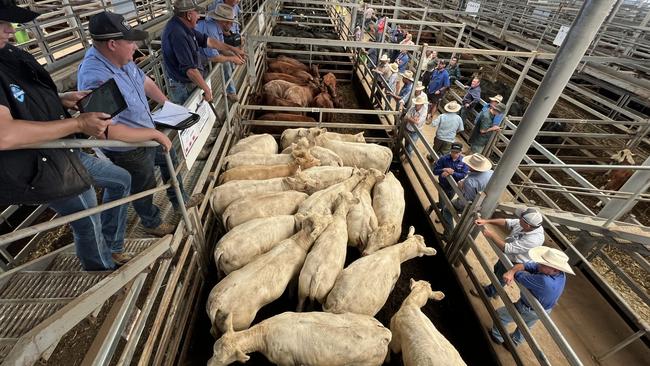Livestock market reaches tipping point
With lambs, sheep and cattle all experiencing price roll-backs this week, just what was behind the surprising results?

The livestock market appears to have reached a tipping point again, with lambs, sheep and cattle all experiencing price roll backs this week.
The easy line to trot out is “supply and demand”, and while there is evidence of a build-up of stock to processors it is difficult to fully explain some of the market meltdowns which really test people’s emotions and confidence in the sale system.
Take for instance cows. Just days after United States authorities announced the lowest US herd in 70 years and there was all this rhetoric about the bullish outlook for grinding beef, and key Australian saleyards are hit by a savage price falls.
Wagga Wagga in the NSW Riverina is a key example. The price average for heavy beef cows on Monday this week was 251c/kg liveweight or just shy of $1700, according to the National Livestock Reporting Service. A week ago the average for the same grade of beef cow was 284c/kg liveweight or $1915. So there was a $200 per head wipe-out – who saw that coming? Certainly not the producers who would have anticipated a fairly solid outcome on a week ago.
Good beef cows were also quoted as 20c to 35c/kg liveweight cheaper at Pakenham in Gippsland on Monday.

It’s the same falling price scenario for lambs and sheep at Bendigo. Heavy lambs were off by at least $20 early this week at the centre and the national indicator shows price rates have dropped by $1/kg carcass weight in the past four weeks.
The mutton market has also taken a big step back and late in the sale there were sheep at Bendigo selling for less than 200c/kg carcass weight again.
The volatility of all livestock markets has become extreme.
Traditional price patterns aren’t being followed, and trying to take an educated guess on when to sell, or if to sell, has essentially become a head f*!#.
But you still go looking for answers anyway.
On the supply side, there was a yarding of 7000 cattle at Wagga Wagga this week as numbers spiked to the biggest offering for some time. It shows the backlog of stock as producers held off for better money, and possibly the influence of some hotter weather.
Looking at the broader supply picture, the national cattle kill is tracking above considerably higher than where it has been in mid-summer for the past two seasons. The actual figures were for the first week of February were:
THIS year 114,064 cattle processed.
LAST year 83,229, and
IN early February, 2022, 66,124.
However, the week-to-week increase hasn’t been that dramatic. The latest kill figure, which was 114,064 for the week ending February 2 as detailed above, is only 5 per cent higher than the seven-day period before.
But it seems to have been the tipping point, with processors and feedlots having enough cattle inventory around them and demand and prices dropping as a result.
It’s the same feedback for lambs and sheep, with kill space tight again, as shown by the fact key buyers haven’t been in the auction system in recent days competing for stock.
On the demand side, there were some interesting comments made to The Weekly Times about processors “needing’’ to reduce the price of cows to create a decent profit margin again.
Yet the price data for 90 chemical lean cow beef into the US, which is the key indicator for manufacturing grade beef, still looks robust. The latest available data has 90CL tracking above 800c/kg at 816c/kg carcass weight delivered port into the US.
This time last year, the grinding beef value was at 709c/kg carcass weight, or 100c/kg less, but the cow price was 30c/kg dearer at an average of 285c/kg liveweight.
The figures do your head in because none of it makes sense, or not enough sense to explain the extreme gyrations such as $200 per head wiped off heavy cows from one market to the next.




